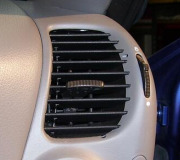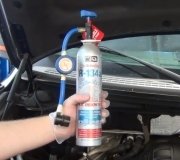2000 Chrysler Grand Voyager 4 cyl Two Wheel Drive 160000 miles
Hi thank you for looking,
When I get in my car from a cold start. I turn on the heat to full. It takes a good ten minutes or so before it blows hot air. It blows straight cold air for that period and then just like someone flipped a switch it blows striaght hot. Then its fine for the rest of the drive. Even if you turn it down or off it will blow hot right away if you turn it up
Saturday, October 24th, 2009 AT 9:36 AM



